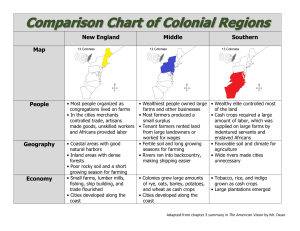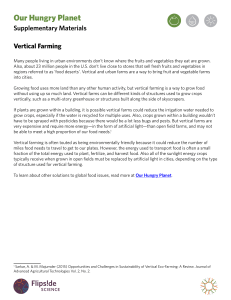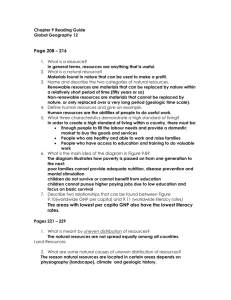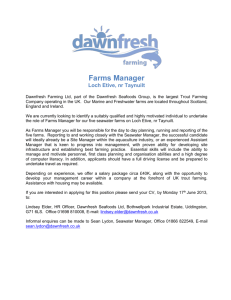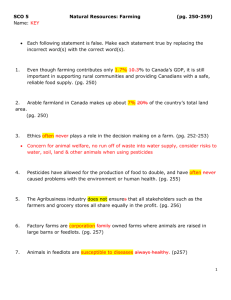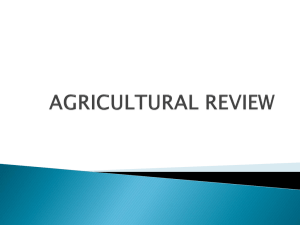Page 221 -229 readin..
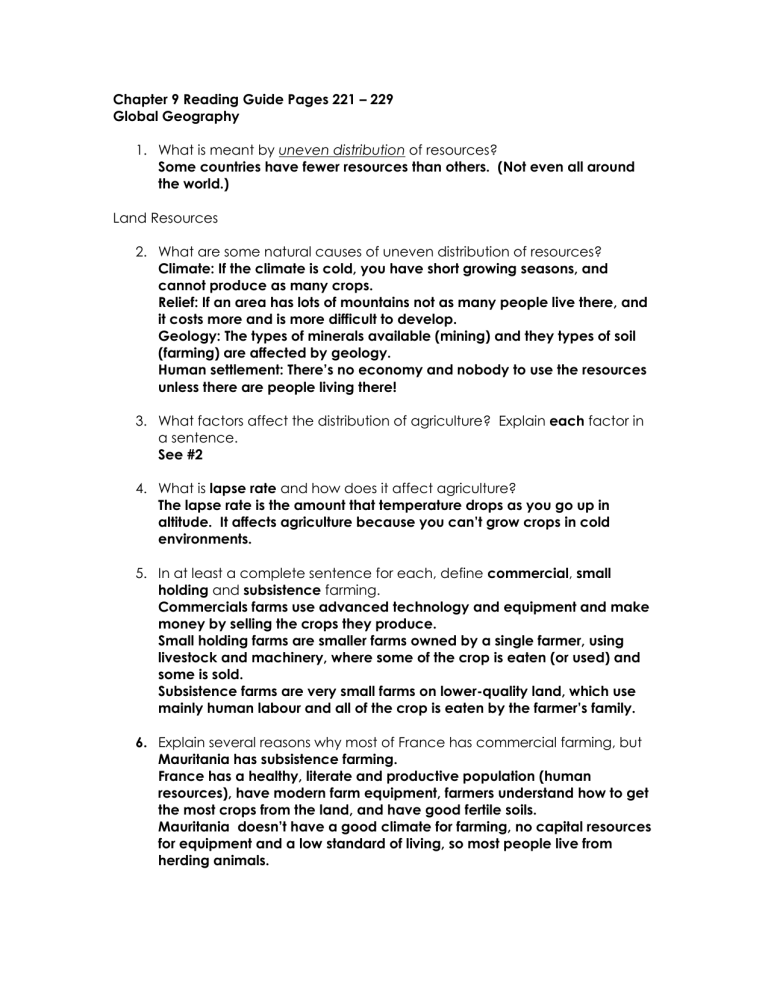
Chapter 9 Reading Guide Pages 221 – 229
Global Geography
1.
What is meant by uneven distribution of resources?
Some countries have fewer resources than others. (Not even all around the world.)
Land Resources
2.
What are some natural causes of uneven distribution of resources?
Climate: If the climate is cold, you have short growing seasons, and cannot produce as many crops.
Relief: If an area has lots of mountains not as many people live there, and it costs more and is more difficult to develop.
Geology: The types of minerals available (mining) and they types of soil
(farming) are affected by geology.
Human settlement: There’s no economy and nobody to use the resources unless there are people living there!
3.
What factors affect the distribution of agriculture? Explain each factor in a sentence.
See #2
4.
What is lapse rate and how does it affect agriculture?
The lapse rate is the amount that temperature drops as you go up in altitude. It affects agriculture because you can’t grow crops in cold environments.
5.
In at least a complete sentence for each, define commercial, small
holding and subsistence farming.
Commercials farms use advanced technology and equipment and make money by selling the crops they produce.
Small holding farms are smaller farms owned by a single farmer, using livestock and machinery, where some of the crop is eaten (or used) and some is sold.
Subsistence farms are very small farms on lower-quality land, which use mainly human labour and all of the crop is eaten by the farmer’s family.
6.
Explain several reasons why most of France has commercial farming, but
Mauritania has subsistence farming.
France has a healthy, literate and productive population (human resources), have modern farm equipment, farmers understand how to get the most crops from the land, and have good fertile soils.
Mauritania doesn’t have a good climate for farming, no capital resources for equipment and a low standard of living, so most people live from herding animals.
7.
Compare Figure 9.15 and 9.17. What type of soil is found where most commercial farms are located?
The soil is “tropical red soil”, “Temperate grassland” and “semi-desert”
(fertile when irrigated).
Water Resources
8.
Why is unsafe drinking water such a problem?
Around the world, unsafe drinking water causes diseases (3-5 million deaths each year, 80% of diseases in LDCs)
9.
Using the map in Figure 9.20 and the map in the front cover of your text, identify three countries that have a chronic water shortage, three that have water scarcity and three countries where 100% of the population has access to safe water.
Chronic water shortages occur in:
Algeria, Egypt, Libia, Tunisia, Saudi Arabia, Yemen, Oman, United Arab
Emirates, Jordan and Israel
Water scarcity occurs in: Peru, Iran, Somalia, Ethiopia, Kenya, , South
Africa and Zimbabwe
100% of the population can get clean water:
Canada, Iceland, Norway, France, Costa Rica, Finland Italy
Mineral Resources
10.
What three factors control whether to open a mine or not?
The creation of a new mine depends on the extent (total amount) and concentration of the mineral; the price the mineral will bring; and the cost
of extracting, processing and transporting the mineral.
11.
Describe several differences between open-pit and underground mines.
An open pit mine is basically a large hole in the ground. The rock is removed in layers.
An underground mine involves shafts (tunnels) underground and is much more dangerous and expensive.
